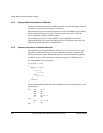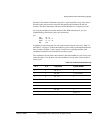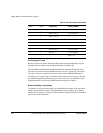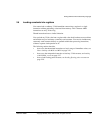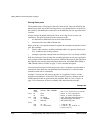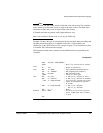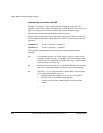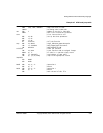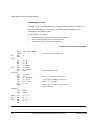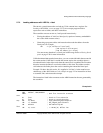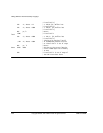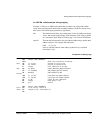
Writing ARM and Thumb Assembly Language
2-30 Copyright © 2000, 2001 ARM Limited. All rights reserved. ARM DUI 0068B
2.7 Loading addresses into registers
It is often necessary to load an address into a register. You might need to load the address
of a variable, a string constant, or the start location of a jump table.
Addresses are normally expressed as offsets from the current pc or other register.
This section describes two methods for loading an address into a register:
• load the register directly, see Direct loading with ADR and ADRL.
• load the address from a literal pool, see Loading addresses with LDR Rd, = label
on page 2-35.
2.7.1 Direct loading with ADR and ADRL
The
ADR
and
ADRL
pseudo-instructions enable you to generate an address, within a certain
range, without performing a data load.
ADR
and
ADRL
accept either of the following:
• A program-relative expression, which is a label with an optional offset, where the
address of the label is relative to the current pc.
• A register-relative expression, which is a label with an optional offset, where the
address of the label is relative to an address held in a specified general-purpose
register. Refer to Describing data structures with MAP and FIELD directives on
page 2-51 for information on specifying register-relative expressions.
The assembler converts an
ADR rn,label
pseudo-instruction by generating:
• a single
ADD
or
SUB
instruction that loads the address, if it is in range
• an error message if the address cannot be reached in a single instruction.
The offset range is ±255 bytes for an offset to a non word-aligned address, and ±1020
bytes (255 words) for an offset to a word-aligned address. (For Thumb, the address must
be word aligned, and the offset must be positive.)
The assembler converts an
ADRL rn,label
pseudo-instruction by generating:
• two data-processing instructions that load the address, if it is in range
• an error message if the address cannot be constructed in two instructions.
The range of an
ADRL
pseudo-instruction is ±64KB for a non word-aligned address and
±256KB for a word-aligned address. (There is no
ADRL
pseudo-instruction for Thumb.)
ADRL
assembles to two instructions, if successful. The assembler generates two
instructions even if the address could be loaded in a single instruction.
Refer to Loading addresses with LDR Rd, = label on page 2-35 for information on
loading addresses that are outside the range of the
ADRL
pseudo-instruction.



